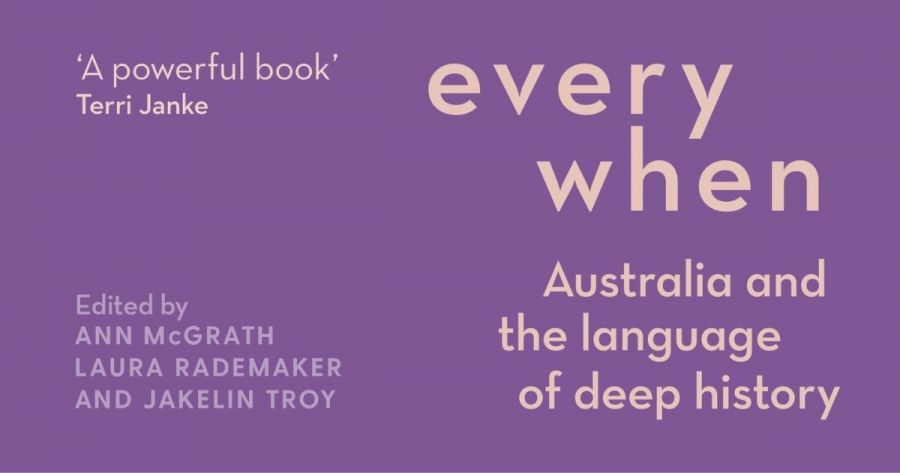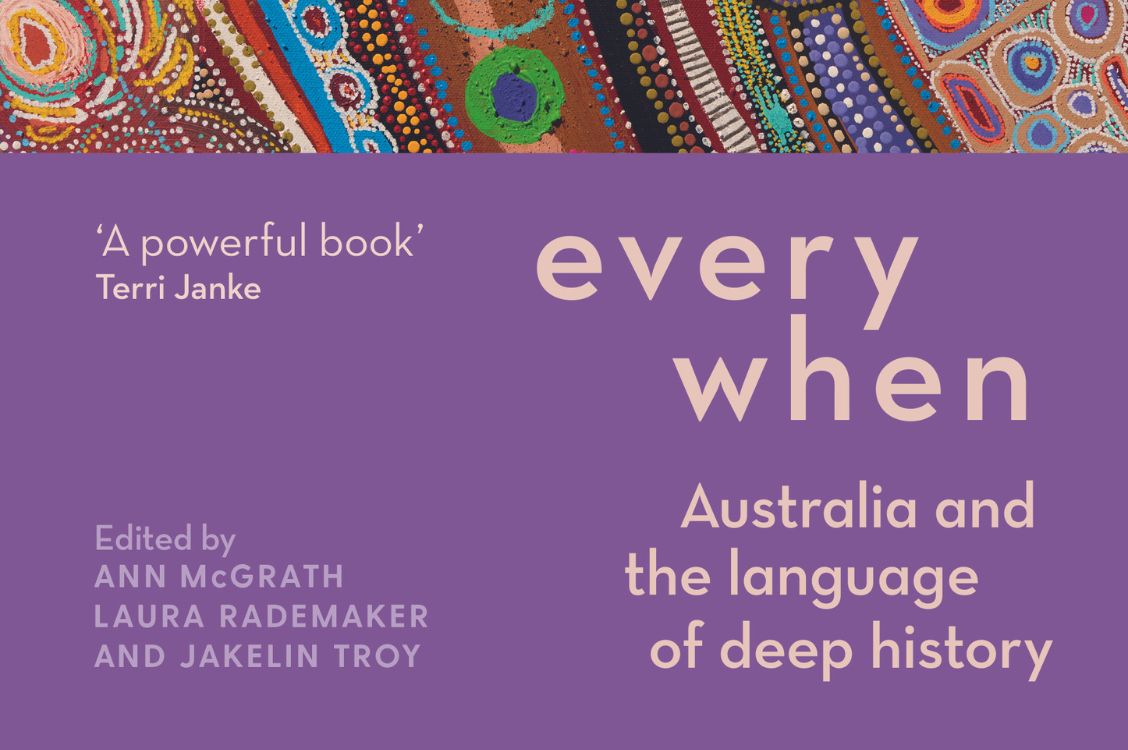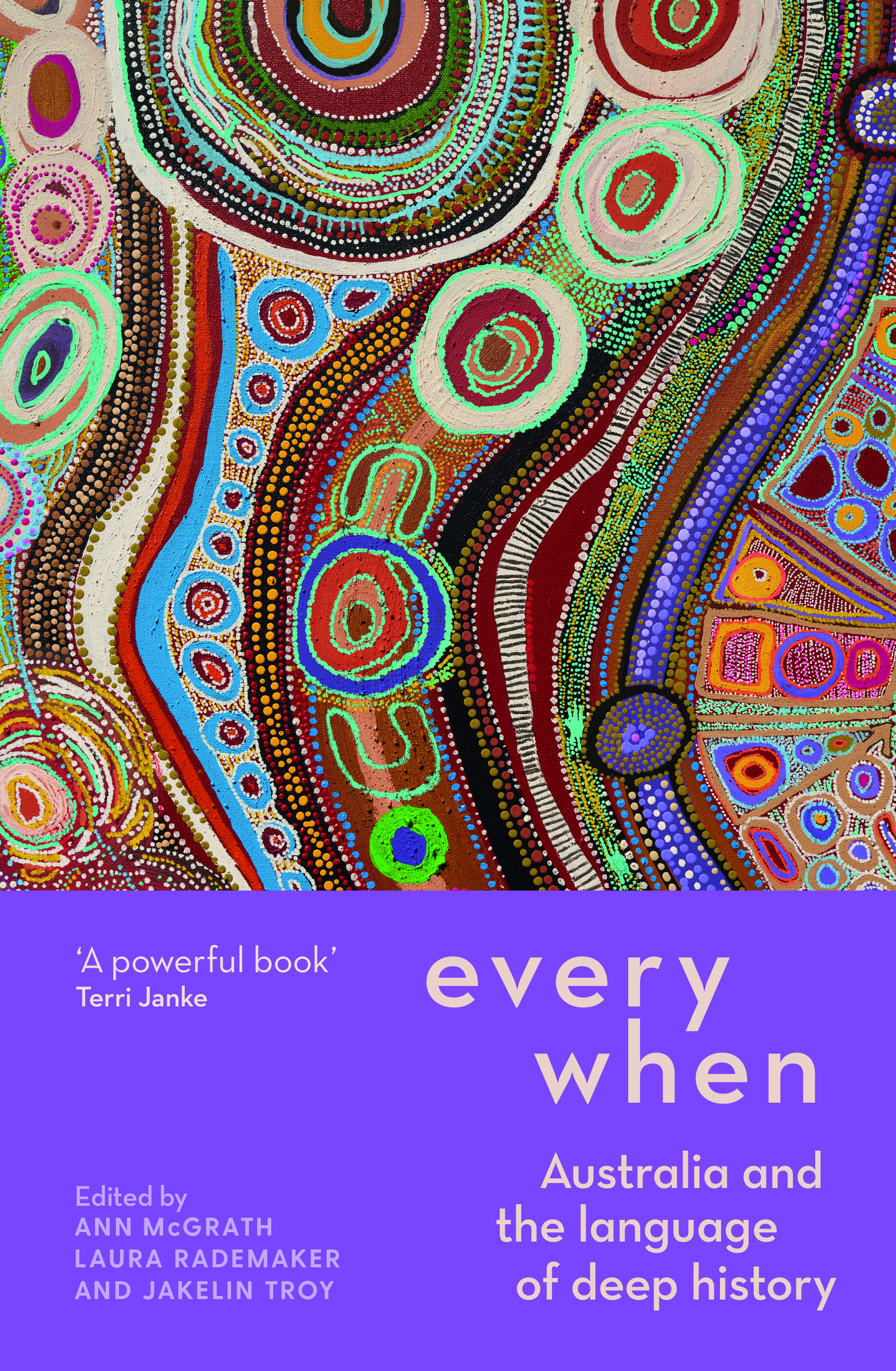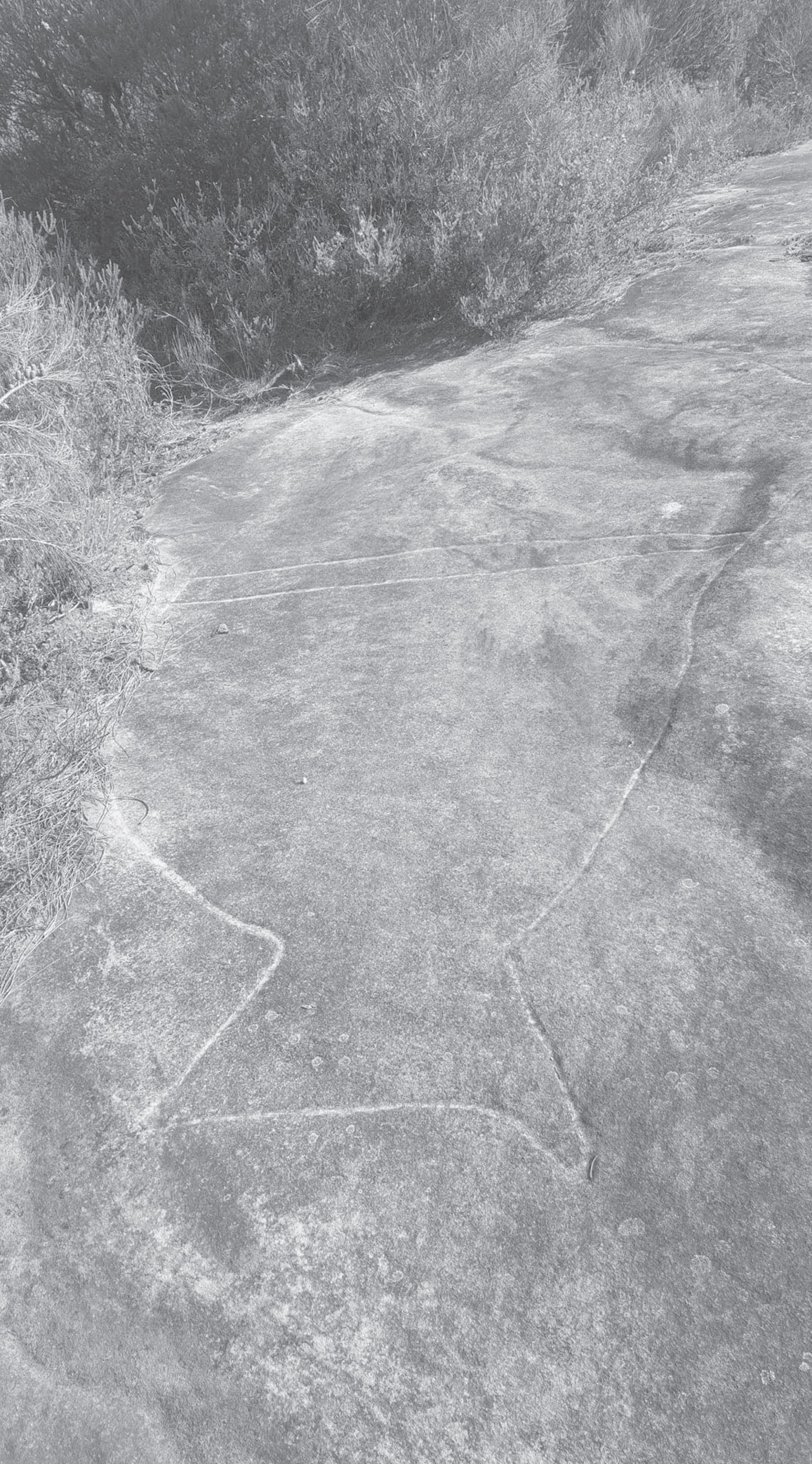
- Free Article: No
- Contents Category: Indigenous Studies
- Review Article: Yes
- Article Title: The Dreaming
- Article Subtitle: A vessel to hold past, present, future
- Online Only: No
- Custom Highlight Text:
It can take an enormous intellectual effort for non-Indigenous people (such as this reviewer) to grasp Indigenous concepts of time. This is partially due to what Aileen Moreton-Robinson has described as the incommensurability of Indigenous and Western epistemological approaches. In settler-colonial terms, land is a resource to be appropriated, surveyed, and exploited. Temporality is generally used to situate the colonisation event, the before and after, from a perspective where time is linear and forward-looking. By contrast, in Indigenous cosmological approaches, land, culture, and time are co-dependent and in perpetual conversation. Country and time are indivisible.
- Featured Image (400px * 250px):

- Alt Tag (Featured Image): Leonie Stevens reviews 'Everywhen: Australia and the language of deep history' edited by Ann McGrath, Laura Rademaker, and Jakelin Troy
- Book 1 Title: Everywhen
- Book 1 Subtitle: Australia and the language of deep history
- Book 1 Biblio: UNSW Press, $49.99 pb, 320 pp
- Book 1 Cover Small (400 x 600):

- Book 1 Cover (800 x 1200):

Everywhen: Australia and the language of deep history offers a guide through this complex terrain. The ‘Language’ in the title does not refer only to linguistics but also to music, cultural performance, ideas, settler myths, archaeology, the retelling of stories, and, most importantly, Country itself. This collection provides a multidisciplinary survey of concepts of time, the language around it, how it is represented, and the complex way this is all linked to land and culture. This is an important, timely, and wide-ranging collection.
 Gawura, the whale, engraved into the sandstone (from the book under review)
Gawura, the whale, engraved into the sandstone (from the book under review)
Ann McGrath and Laura Rademaker’s introduction outlines some of the key concepts raised in this volume. In exploring notions of time and how it is represented, ideas about what constitutes and qualifies ‘history’ are challenged. This overview is essential and provides a sense of cohesion to a series of papers which, without it, may seem disparate.
The papers are organised into three interrelated themes. The first section, ‘Songs of Country in Time’, focuses on music, song, and performance, and takes the reader from the eastern high country to the west coast, then to the central desert. A key theme between the four papers in this section is relationality. Jakelin Troy’s exploration of Ngarigu continuity in the Victorian/New South Wales High Country is a powerful and poetic meditation on Country, culture, and the reclaiming of identity. Sarah Yu, with Yawuru elders from the Broome area of Western Australia, raises themes of language, culture, and Yawuru cosmology, and the role of cultural performance in keeping language alive. To the south, and Noongar Country, Clint Bracknell examines the role language, song, and performance traditions play in highlighting the connections, rather than divisions, between past, present, and future. This theme of the link between present, and deep past, and how it is achieved through performance, is extended by Linda Barwick in her chapter on Warlpiri music and performance, where performers are ‘embodiments of ancestral knowledge’.
The second section, ‘Time’s Archive? The Language of Words’, has a linguistic focus, and comprises papers with a technicality appropriate to the discipline. James Bednall looks at the complexity of the way time and temporality are expressed in the Anindilyakwa language of North-east Arnhem land. Michael Walsh and Harold Koch offer an overview of some of the key challenges in searching for evidence of the deep past in Indigenous languages, when linguistic analysis can only reliably extend to about three thousand years. Marie-Eve Ritz and Maïa Ponsonnet discuss how time and tense are conceptualised and expressed in Indigenous languages, and how this is comparable to languages across the world. This challenges essentialising tropes of Indigenous peoples inhabiting and experiencing time differently.
The final section, ‘Transforming Time’, is interdisciplinary and concerns movement, change, and interaction. Archaeologist Catherine J. Frieman surveys archaeological models and critiques the tendency to focus on revolutions and innovations, rather than the time in between. Historian John Maynard looks at the word yuraki (long ago, past or history) to challenge Eurocentric depictions of Indigenous peoples as being ahistorical and trapped in the Stone Age, and highlights instead power and dynamism. Anthropologist Peter Sutton revisits his own earlier work to explore variations in the Wik oral traditions of the Dutch at Cape Keerweer, and the role of the individual storyteller. Laura Rademaker focuses on Mission history, conversations about time, and the implications for conversion, where Indigenous people co-opted missionary concepts of time (the eternal Logos) to support ideas of eternal sovereignty and Dreaming.
The final chapter, by Shannon Foster on D’harawal engagement with ancestral knowledges, reminds us why all of this is important. Foster’s focus on rock engravings in the area now known as Sydney is enriched by a much deeper connection across time and using the metaphor of weaving barumu (kangaroo grass), she writes ‘We work within the gaps, the space in between, to create a form, to build a vessel, that can hold our past, our present, and our future.’ Like a number of chapters in this volume, it is at its most compelling when seen through the lens of family, community, and culture.
This book is a valuable instalment in the long response to W.E.H. Stanner’s coining of the term ‘everywhen’, and provocation to address the great Australian silence. Like language of deep history, these chapters are diverse but paradoxically specific: time is relational and place-based. Reading this collection is akin to weaving barumu. Ideas and concepts raised in a discussion about word use, music, performance, archaeology, or family history spread out, thread together, travel on surprising tangents, then loop back upon themselves. The patterns then emerge, best seen with distance and reflection.


Comments powered by CComment